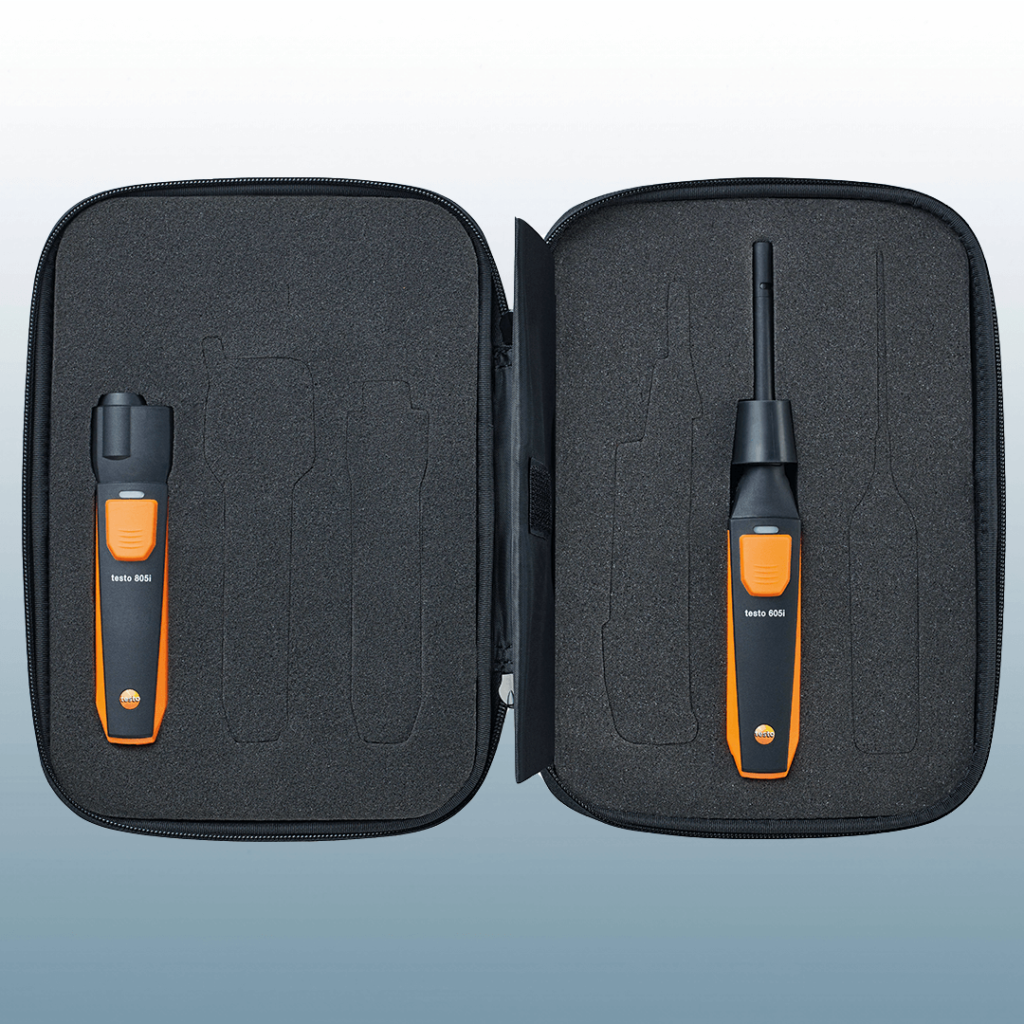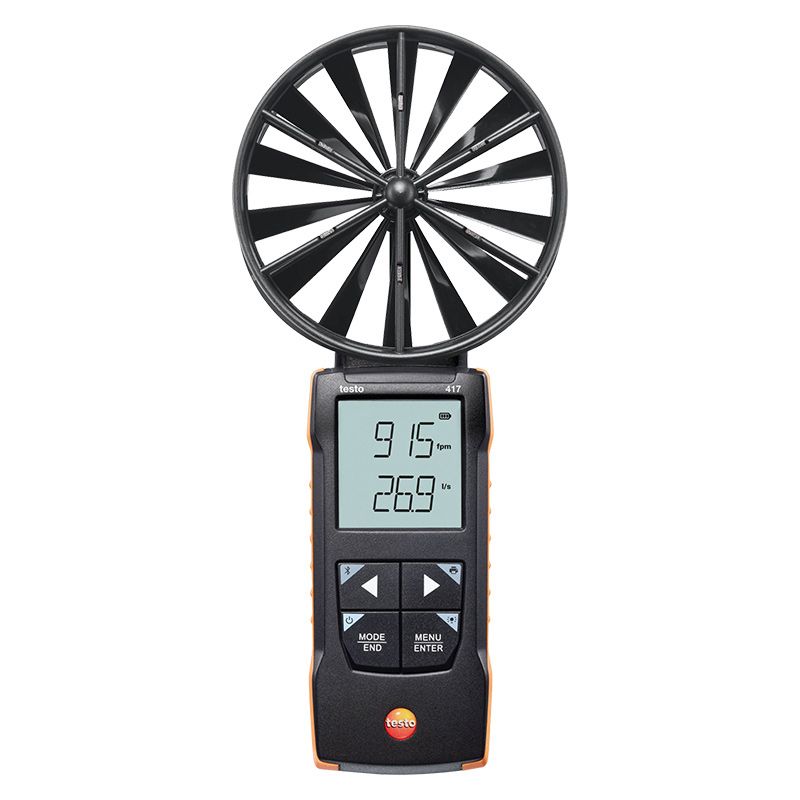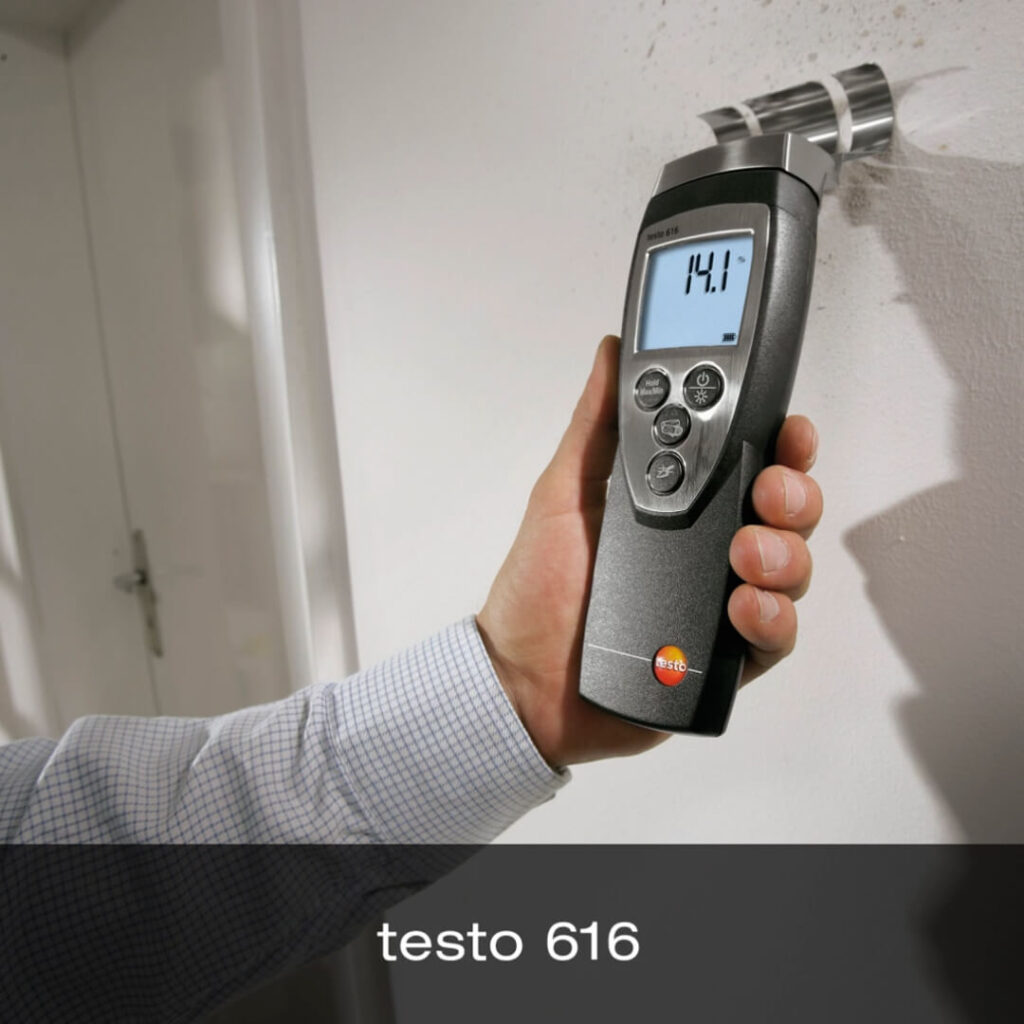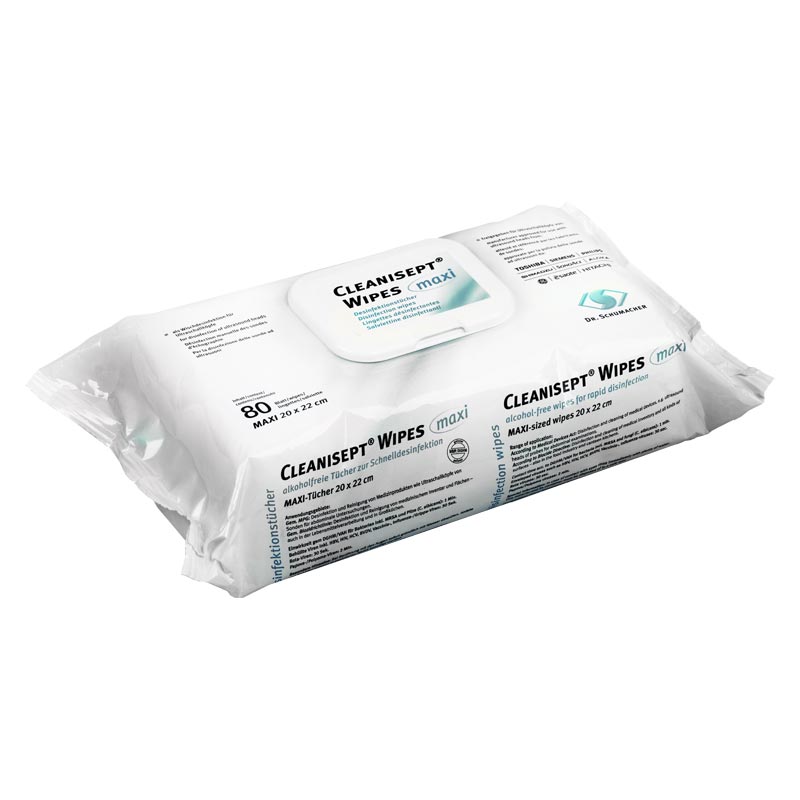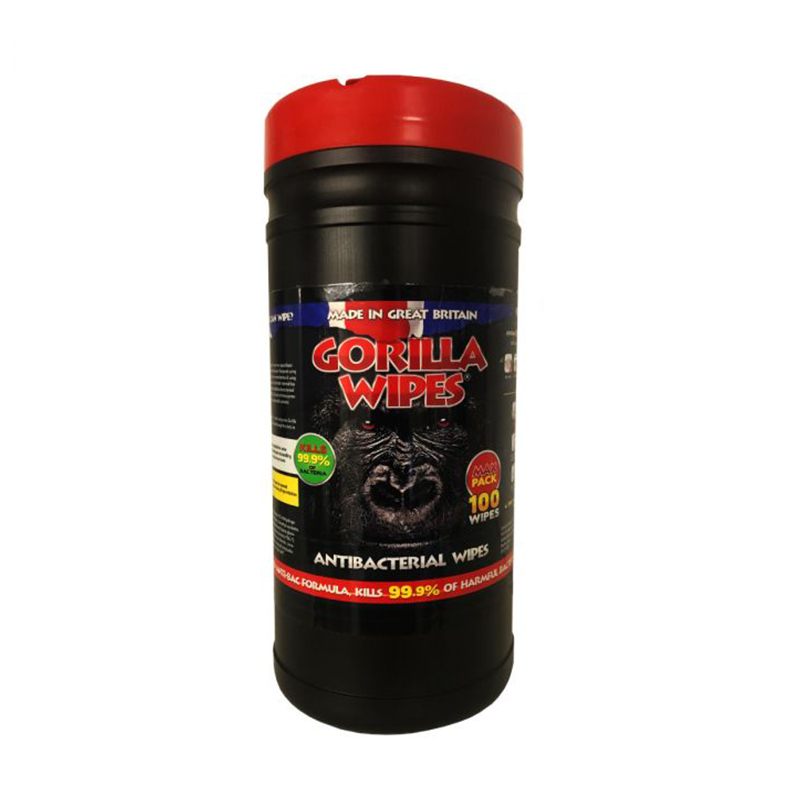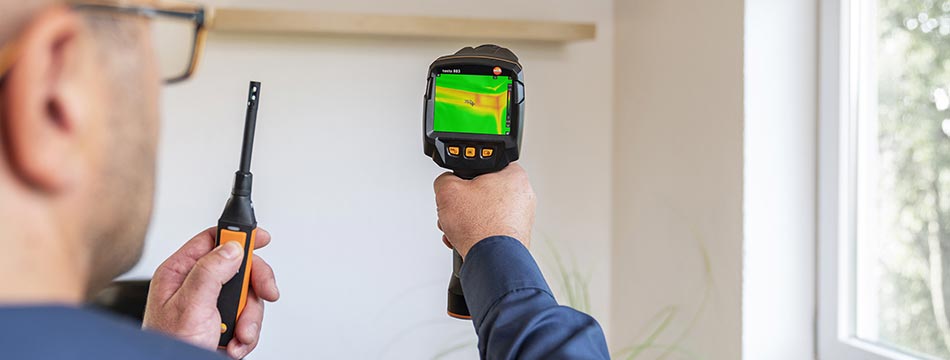
Mould isn’t simply unseemly. It’s dangerous. Every year NHS England spends £1.4 billion treating illnesses resulting from prolonged exposure to cold and damp living situations.[1] A 2023 study by Utilita Energy uncovered that 24% of 2000 participants found mould in their homes. It also discovered that 21% of respondents currently live with damp, while 20% regularly encounter “excessive” condensation.[2] Similarly, research conducted by Uswitch revealed that 58% of UK residents surveyed had found mould in their homes at some point.[3] The catastrophic consequences of untreated mould were cast into the public eye in November 2022 when a Senior Coroner for Manchester North ruled that toddler Awaab Ishak’s death was caused by “a severe respiratory condition due to prolonged exposure to mould in his home environment.”[4] Consequently, a new law was proposed. Awaab’s Law will require social housing landlords to address issues within fourteen days; begin fixing them within a further seven; or ensure emergency repairs are undertaken within twenty-four hours.[5] This law is necessary. Nevertheless, addressing mould is expensive. However, fear not because identifying the circumstances conducive to mould (and correcting them to prevent outbreaks) is easier and cheaper. Read on for five simple ways to spot these conditions before outbreaks damage your health and home.
Quick Links
- What are the ideal conditions for mould?
- Detect Damp Spots with a Thermal Camera
- Assess Air Temperature & Humidity with a Thermohygrometer & IR Thermometer
- Verify Air Ventilation with a Vane Anemometer
- Measure Material Moisture with a Moisture Meter
- Annihilate Mould Nutrients Antibacterial Wipes
- Further Information
What are the ideal conditions for mould?
Warm, damp areas or humid spaces with stagnant air flow are susceptible to condensation, and, consequently, mould growth. In fact, “condensation is the leading cause of mould in homes across the UK.”[6] This is why most people encounter mould in bathrooms, kitchens, and around windows.
Like all living things, mould requires a source of oxygen and nutrition to survive. However, these factors are considerably more difficult to control. Ensuring your home is suitably insulated helps to prevent mould from growing on or behind walls. In addition to this, regular cleaning can stop the accumulation of food sources (e.g. wood, paper, fabric, and dust). [7]
Detect Damp Spots with a Thermal Camera
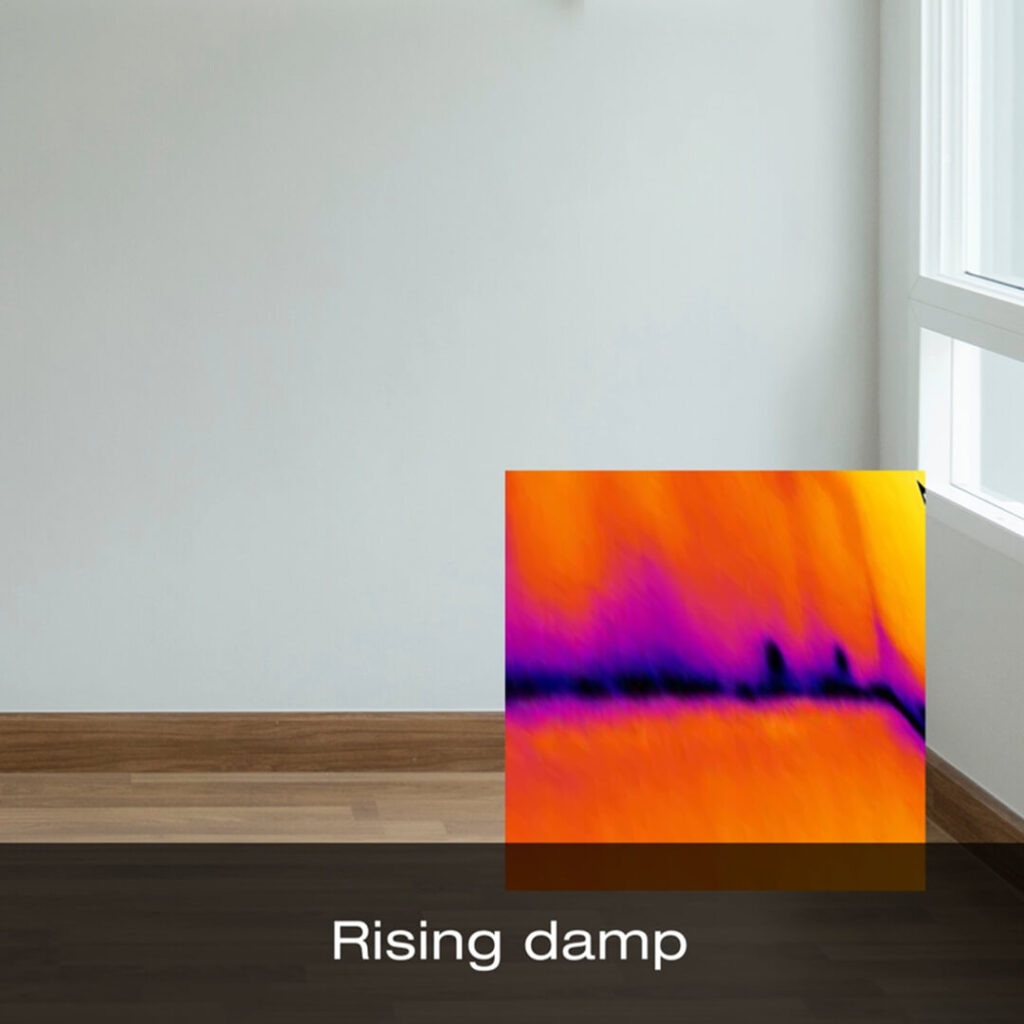

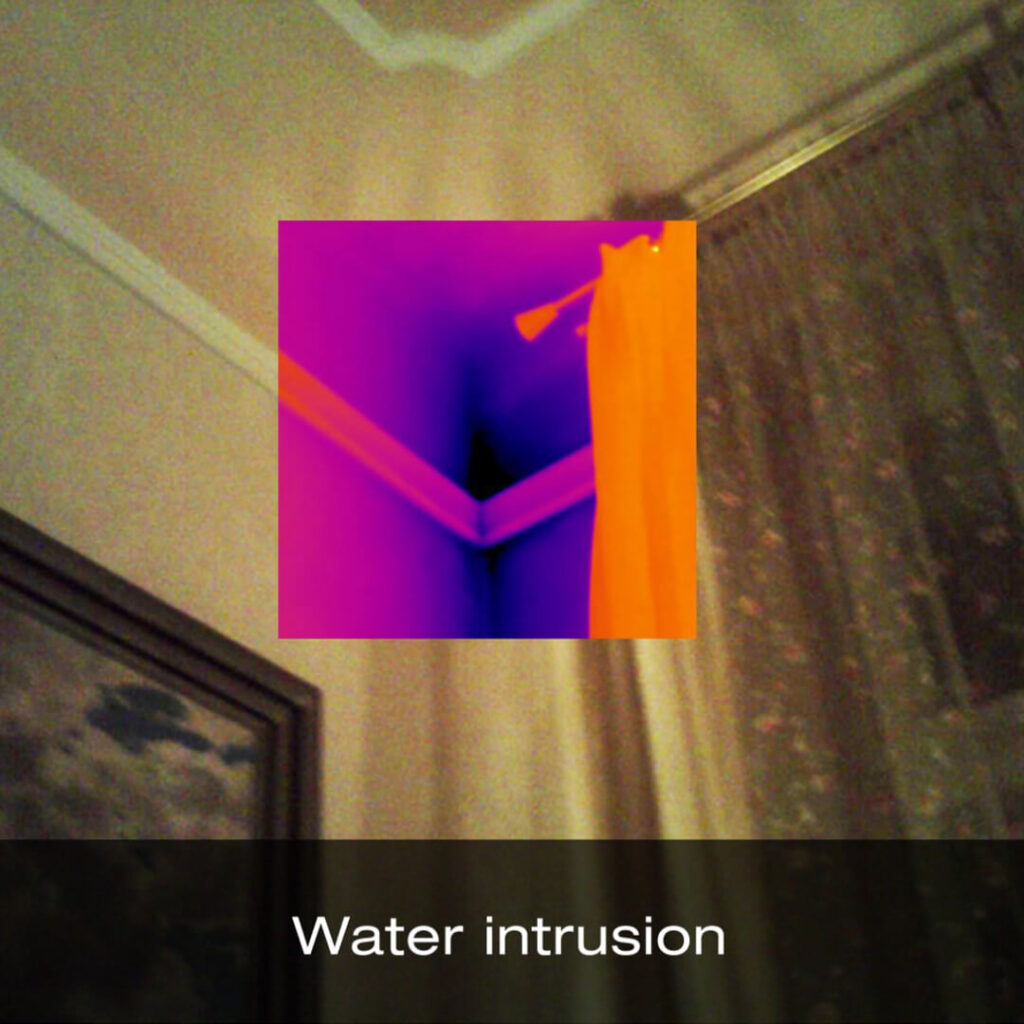
Cold spots are more susceptible to damp, condensation, and, subsequently, mould than other areas. Thankfully, thermal cameras make it easy to spot sections of walls, windows, or ceilings (etc) with a lower temperature than their immediate surroundings. Cold spots will appear on the heat map as a darker colour, for example, blue, allowing you to see exactly where remediation work is required to prevent mould outbreaks.
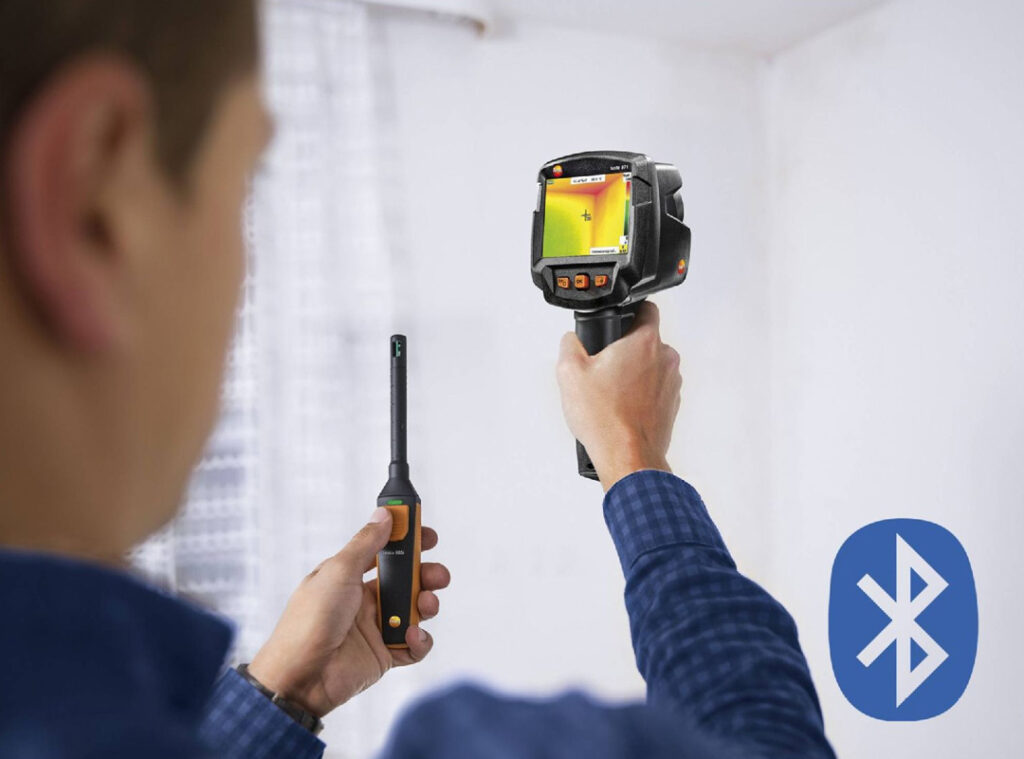
Some thermal imaging cameras, such as Testo’s 871s and 872s, can be used together with a thermohygrometer (Testo 605i) to assess the risk of surface moisture. The mould risk is indicated using a traffic light system, enabling fast identification of problem (red) areas.
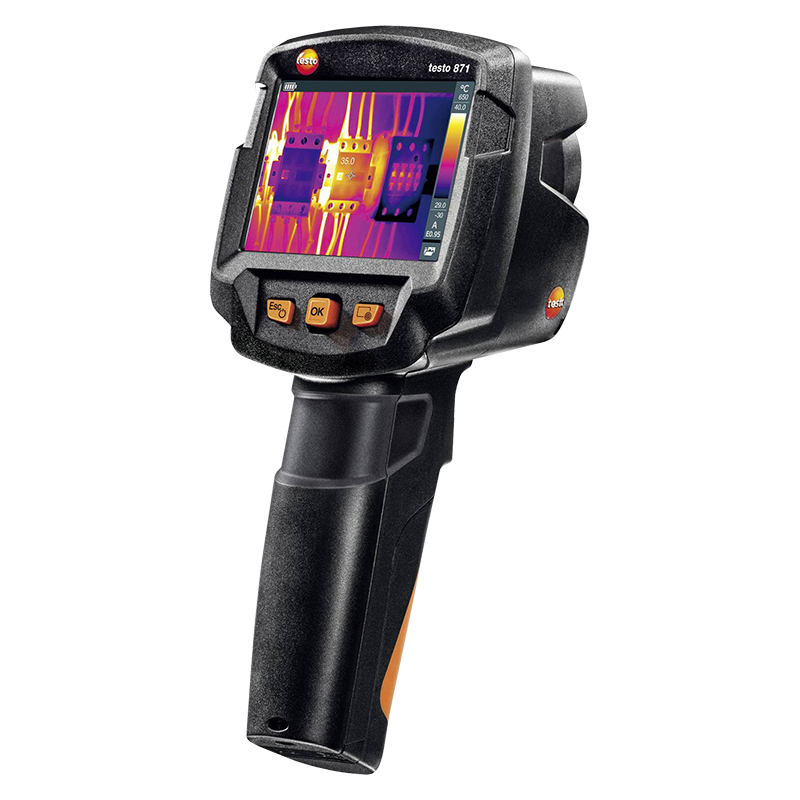
Testo 871s Thermal Camera
- IR Resolution: 240 x 180px
- SuperResolution technology increases the IR resolution to 480 x 360px
- Can detect temperature differences as small as 0.08°C
- Temperature range: -30°C to +650°C
- Integrated digital camera
- Testo ScaleAssist
- Testo E-Assist
- Compatible with the Testo Thermography App
- Use with Testo Smart Probes
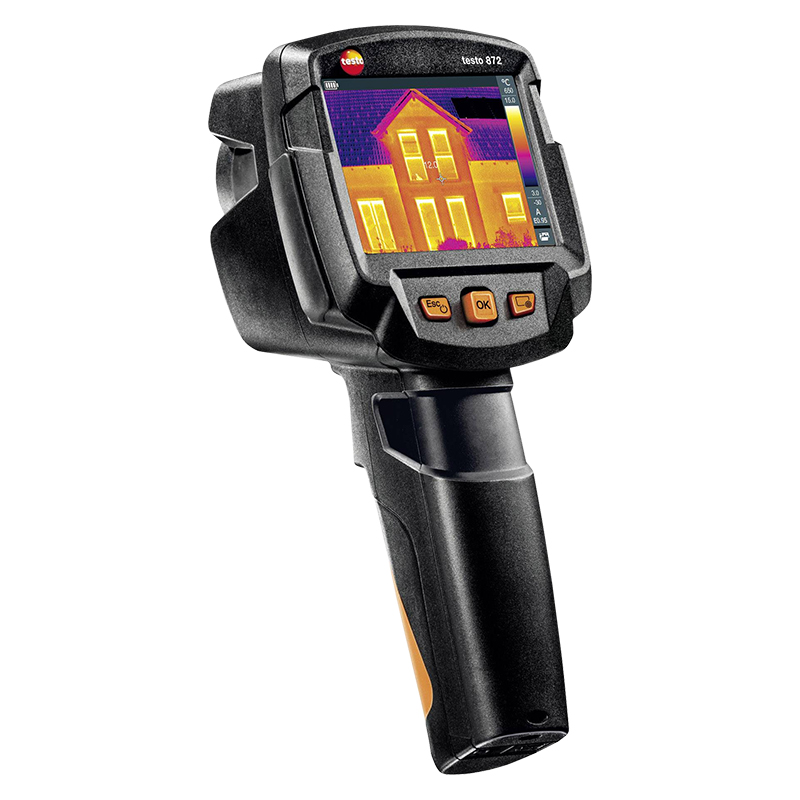
Testo 872s Thermal Camera
- IR Resolution: 320 x 240px
- SuperResolution technology increases the IR resolution to 640 x 480px
- Can detect temperature differences as small as 0.06°C
- Temperature range: -30°C to +650°C
- Integrated digital camera
- Testo ScaleAssist
- Testo E-Assist
- Compatible with the Testo Thermography App
- Use with Testo Smart Probes
Assess Air Temperature & Humidity with a Thermohygrometer & IR Thermometer
Excess moisture in the air and surface temperatures below dew point (the atmospheric temperature below which water vapour will turn into water droplets[8]) are conducive to condensation, therefore providing the perfect environment for mould. Ascertaining the ambient humidity and temperature, as well as the surface temperatures within a room, allows you to assess the likelihood of condensation and mould growth. Pinpointing at-risk areas means you can apply corrective measures effectively.
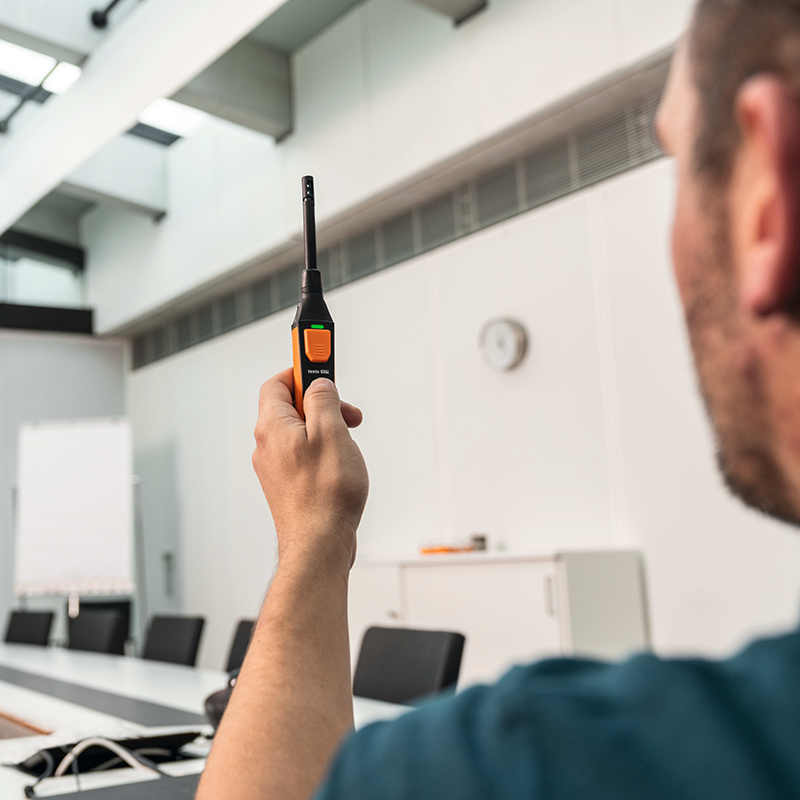
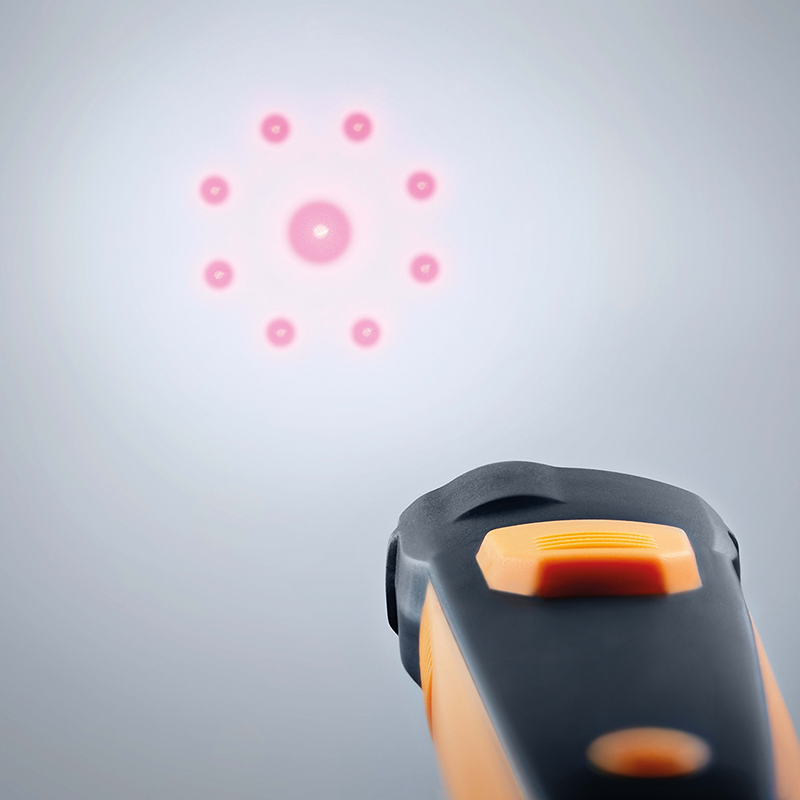
Testo’s Smart Probe Mould Kit is designed for just this purpose. To this end, it includes a Testo 605i Thermohygrometer and a Testo 805i Infrared Thermometer supplied in a protective case with a foam insert. When used in conjunction with Testo’s free Smart App (available for iOS and Android), the 605i Thermohygrometer measures air temperature and humidity while the 805i IR Thermometer determines surface temperature. From this data, the Testo Smart App will calculate the probability of mould. The degree of risk is communicated via a traffic light system, e.g., red indicates a high risk whilst green indicates low/no risk.
Testo Smart Probes Mould Kit
- Includes Testo 605i Thermohygrometer
- Includes Testo 805i IR Thermometer
- Compatible with the Testo Smart App
- Bluetooth range: 100m
- Measure air humidity and temperature
- Measure surface temperature
- Calculate wet bulb temperature and dew point
- Indicates risk of mould using a traffic light system
Like thermal cameras, hygrometers and IR thermometers detect cold spots (in this case, areas below the dew point) and ascertain the risk of mould. However, while more economical than thermal cameras, these tools are unable to check large areas at once. Therefore, you should expect mould surveys to take longer.
How to Use Testo's Smart Probes Mould Kit
How To Reduce Your Risk of Mould Using Testo Smart Probes
How to Use Testo's Smart Probe Features for Mould Growth Prevention
How To Reduce Surface Moisture Potential with Testo's Smart Probes & App
How to Create a Mould Inspection Report with the Testo Smart App
Verify Air Ventilation with a Vane Anemometer
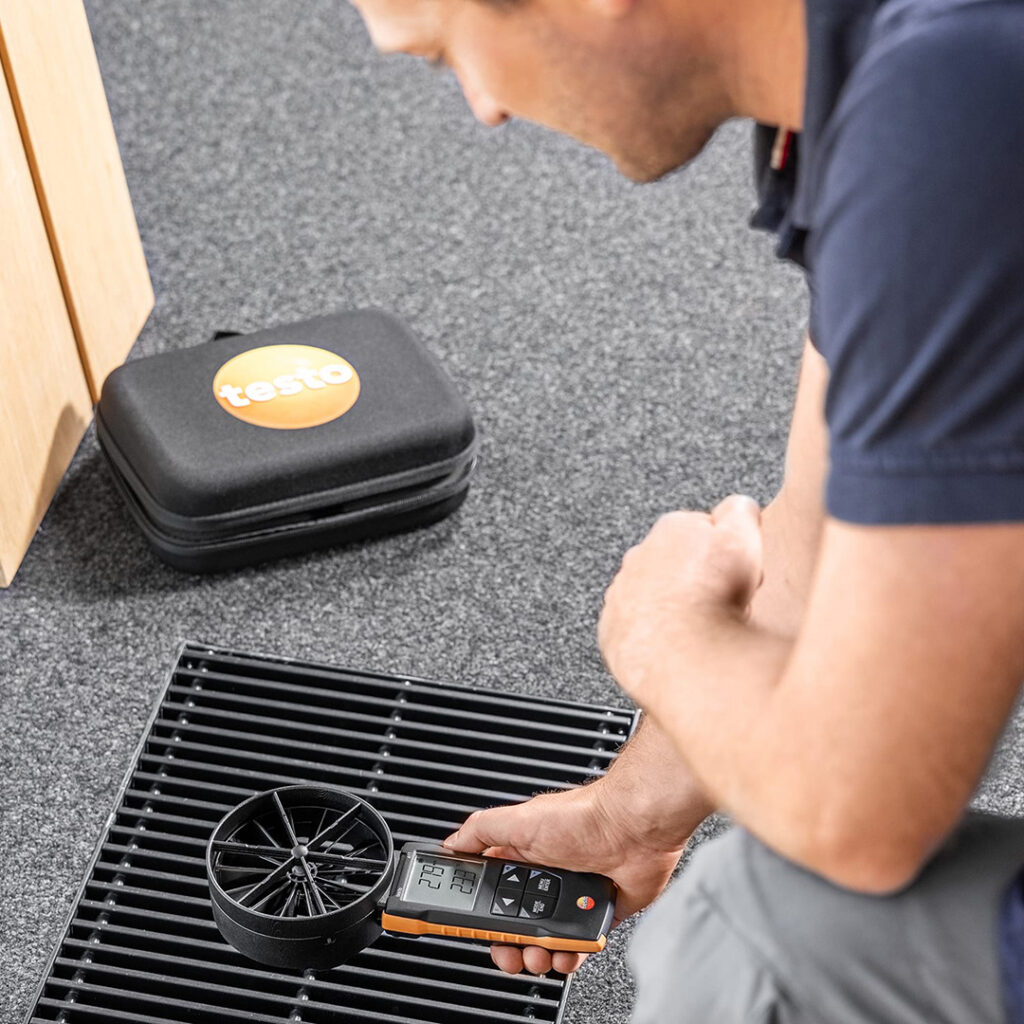

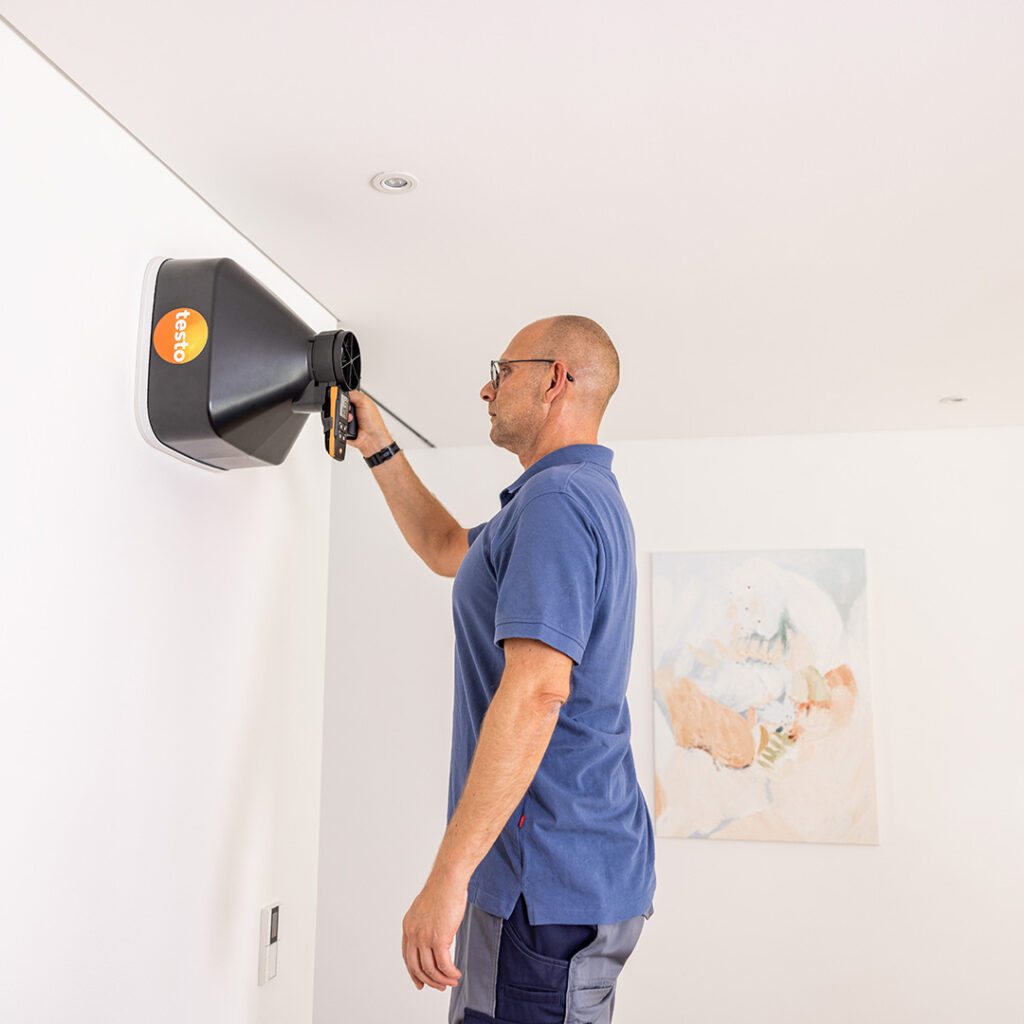
Condensation occurs when stagnant humid air interacts with surfaces below dew point. As a result, these areas are far more likely to develop mould. One way to prevent humid air from interacting with cold surfaces is to ensure well-balanced ventilation. Air that can move freely through a room is less likely to settle as condensation. A vane anemometer, such as Testo’s 417, measures airflow velocity and volume of airflow. As such it can be used to assess the performance of ventilation systems and is perfect for HVAC maintenance and troubleshooting.
Testo 417 Digital Vane Anemometer
- Measure flow, volume flow, and temperature
- Compatible with the Testo Smart App
- 100mm diameter vane anemometer
- Data Hold function
- Timed and point mean value calculation
- Display light
- Auto-off function
- Compact design with robust housing
Measure Material Moisture with a Moisture Meter
Unfortunately, cold spots in properties are likely to fall victim to damp or condensation. If materials have absorbed any of this moisture, they may provide the ideal breeding ground for mould. Assessing any potential water absorption can be tricky; however, moisture meters, such as Testo’s 616, provide an easy and efficient method of checking whether moisture has penetrated surfaces. Identifying areas that have suffered water damage ensures you can target corrective measures effectively.
Testo 616 Material Moisture Meter
- Suitable for checking anhydrite screed, cement screed, lime sand brick, aerated concrete, vertical hole bricks, solid bricks, & all types of soft, hard, and chipboard woods
- Wood measurement range: <50%
- Building materials measurement range: <20%
- 0.1 resolution
- Curved prongs
- Non-destructive testing
- IP30
- Battery life: 60 hours
- Illuminated digital display
Annihilate Mould Nutrients with Antibacterial Wipes
Removing sources of nutrition, such as dust, paper, fabric, wood, and food remnants, can prevent mould spores from growing. Using antibacterial wipes to clean around areas prone to mould, such as windows and seals, is a simple way of ridding surfaces of these foods as well as infant mould spores that have yet to grow and reproduce.
Further Information
For additional pointers on identifying the conditions conducive to mould and/or for advice regarding any of our products, including the Testo instruments featured in this article, please call our Sales Team on 01642 931 329 or via our online form.
[1] Helen Garrett, Molly Mackay, Simon Nicol, Justine Piddington, Mike Roys, The cost of poor housing in England: 2021 Briefing Paper, last accessed 03 June 2024. Tim Dodd and James Gregory, ‘Black mould: How dangerous is it in the home and how can it be treated?’, BBC News, last accessed 07 June 2024.
[2] Alice Hughs, ‘More than a fifth of UK homes are suffering from damp’, Independent, last accessed 03 June 2024. Rosie Wills, Damp & Mould Review 2023, last accessed 07 June 2024.
[3] Ben Gallizzi, ‘Mouldy nation report’, U switch, last accessed 07 June 2024.
[4] Katie Townsend, ‘What is Awaab’s Law?’, Centre For London, last accessed 07 June 2024.
[5] Tim Dodd and James Gregory, ‘Black mould: How dangerous is it in the home and how can it be treated?’
[6] Tim Dodd and James Gregory, ‘Black mould: How dangerous is it in the home and how can it be treated?’
[7] BMS CAT, What Does Mold Need to Grow? 6 Things You Need to Prepare For, last accessed 07 June 2024. Nimbus Homes, Conditions for Mould to Grow: Causes and Factors, last accessed 07 June 2024.
[8] Tim Dodd and James Gregory, ‘Black mould: How dangerous is it in the home and how can it be treated?’


